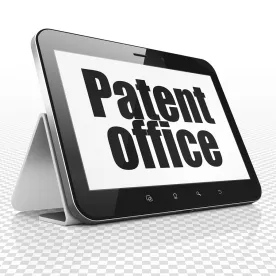The rule changes are aimed at streamlining proceedings before the TTAB.
The Trademark Trial and Appeal Board (TTAB) will implement several important rule changes as of January 14, 2017. The changes will apply to all proceedings active as of that date as well as those subsequently filed.
The Patent and Trademark Office (PTO) summarizes the purpose of the rule changes as an effort “to benefit the public by providing for more efficiency and clarity in inter partes and ex parte proceedings.”[1] The amendments “are directed to reducing the burden on the parties, to conforming the rules to current practice, to updating references that have changed, to reflecting technologic changes, and to ensuring the usage of standard, current terminology.”[2]
Overall, the amendments reflect an effort to give the Board and the interlocutory attorney more power to streamline the process, and changes in discovery scope and procedure are likewise aimed at making TTAB proceedings more efficient and expedient. The mandate that discovery must be served in time to be responded to during the discovery period (rather than the fairly common maneuver of service on the last day of discovery) and moving up the deadline for summary judgment from prior to the trial period to prior to pretrial disclosures should have a measurable and positive effect on reducing the length of the proceedings.
The full text of the final rule is available on the PTO’s website. The PTO has also published a useful chart summarizing the changes. Some of the most significant changes are discussed further below.
FILING AND SERVICE
New Rule: All submissions must be filed through the Electronic System for Trademark Trials and Appeals (ESTTA) except in “certain limited circumstances.”
How It Is Different—Parties are currently permitted to submit paper filings.
Why It Matters—While this rule change will likely have minimal impact, as only 5% of attorneys are not already using ESTTA, it is an effort to bring TTAB practice fully into the electronic age. This will have the benefit of largely eliminating the need to wait in order to determine if a party utilized paper filings when a deadline passes without an ESTTA filing.
New Rule: The TTAB will automatically serve notices of opposition, cancellation, and concurrent use proceedings on the respondent electronically. All subsequent filings and other documents requiring service must be served by the parties via email (consequently, the five-day service period that is currently built into response deadlines has been eliminated).
How It Is Different—Currently, it is the responsibility of the parties to serve the hard copies of the complaint and all subsequent documents. The parties can stipulate to service by email for everything after the initial filing, but it is not required.
Why It Matters—Although it is currently fairly routine for parties to stipulate to service by email, there is an incentive to decline electronic service in order to secure the extra five-day period. The new rule takes this bit of gamesmanship off the table, which will likely make discovery move slightly faster.
TESTIMONY
New Rule: Testimony will be allowed via declaration or affidavit. The opposing party will have the right to cross-examine via live deposition.
How It Is Different—Currently, trial testimony must be elicited by deposition. Testimony by declaration or affidavit is allowed only if both parties stipulate to the procedure.
Why It Matters—Permitting testimony by declaration will lower the costs of introducing evidence and, overall, should make trials less costly. It will be interesting to monitor the interplay of this amendment with the US Supreme Court’s recent decision in B&B Hardware, Inc. v. Hargis Industries, Inc., 135 S. Ct. 1293 (2015). There, the Supreme Court held that a ruling on the likelihood of confusion question could be binding on a subsequent district court proceeding if the ordinary elements of preclusion are met. That, in turn, requires that the procedure used at the TTAB ensured sufficient “quality, extensiveness, and fairness.”[3] Yet these new procedures will move TTAB proceedings further away from the live direct examination/live cross examination model on which federal courts rely. It remains to be seen if the preclusive effect of TTAB decisions will be challengeable on the basis that the normal procedures of federal court now differ from those relied on in TTAB proceedings.
DISCOVERY REQUESTS
New Rule: Parties must abide by the proportionality requirement implemented into the 2015 amendments to the Federal Rules of Civil Procedure.
How It Is Different—In late 2015, the Federal Rules of Civil Procedure changed the well-known “reasonably calculated to lead to the discovery of admissible evidence” standard for the scope of discovery to one that considers whether the requests are “proportional to the needs of the case” based on a number of factors. There is no proportionality requirement under the TTAB rules now in force.
Why It Matters—While it remains to be seen how strictly the TTAB interprets the proportionality requirement (and indeed how much it changes the scope of discovery in federal courts), it has the potential to be one of the most significant rule changes. There are generally five factors considered by federal courts in determining whether discovery is “proportional to the needs of the case”:
-
Importance of the issues at stake in the action
-
Amount in controversy
-
Parties’ relative access to relevant information
-
Parties’ resources
-
Importance of the discovery in resolving the issues
The “amount in controversy” factor is obviously not at issue in TTAB proceedings, where damages are not recoverable. As to the remaining factors, it remains to be seen if the additional emphasis on relative resources will have an impact on the level of discovery permitted in TTAB proceedings.
New Rule: Both requests for production of documents and requests for admission will be capped at a maximum of 75 and discovery must be completed during the discovery window.
How It Is Different—While interrogatories are already capped at 75, requests for production and requests for admission are currently uncapped. In addition, parties are able to serve discovery less than 30 days prior to the close of discovery.
Why It Matters—These amendments represent perhaps the most concrete steps to streamline the discovery process. Parties will have to think even more carefully about their discovery requests and, in particular, be ready to serve such requests earlier in the discovery window. Discovery should no longer be a device that can be used to delay proceedings.
SUMMARY JUDGMENT
New Rule: Summary judgment will have to be filed prior to the deadline for pretrial disclosures, the time for motions under 56(d) and to file a reply brief will not be extended, and dispositive motions will automatically suspend proceedings.
How It Is Different—Currently, summary judgment can be filed any time prior to commencement of the trial period, there is no bar on extending time for 56(d) motions or on reply briefs, and proceedings can be stayed based on a dispositive motion, but it is not automatic.
Why It Matters—Moving summary judgment up in the process should reduce gamesmanship and instances in which the motion can be used to drag out proceedings. Automatically staying the proceeding should enhance the efficiency of proceedings and eliminate the uncertainty of the timing of a potential stay, which should lead overall to greater efficiency.
GREATER BOARD AUTHORITY
New Rule: The Board will sua sponte be able to suspend proceedings, participate in discovery conferences, convene a telephone conference whenever beneficial, and even sua sponte grant judgment where it is clear the plaintiff has failed to prosecute the matter.
How It Is Different—While the Board may, in theory, be able to take some of these steps under a broad penumbral power to supervise proceedings, each of these powers will expressly be codified in the rules.
Why It Matters—This is a clear attempt to empower the Board to make TTAB proceedings more efficient and expedient. Hopefully, this expression of a mandate to the Board will help reduce the perception that TTAB proceedings can be slow-moving and easily gamed.
FEE INCREASES (PTO AND TTAB)
New Rule: Filing a notice of opposition or a petition to cancel will cost $400 (up from $300). A request for a 60-day extension of time to file a notice of opposition after having already been granted a 30-day extension will cost $100 per class, and a request for an extension after having been granted a 90-day extension of time will cost $200 per class (previously there was no fee). Also the governmental fees for filing of applications will increase. Regular TEAS-filed applications will cost $400 per class (up from $325).
How It Is Different—The application and notice fees represent fee adjustments, but the filing of extensions of time (EOTs) to oppose an application presently do not require a governmental fee at all.
Why It Matters—Although the fees are not exorbitant, they may make a party reconsider whether it wants to oppose and to seriously evaluate an opposition before filing an extension. This could reduce instances of applications being unnecessarily delayed by nothing more than a free-to-file, one-page form.
CONCLUSION
While these changes do not represent a fundamental shift in procedure, they are a welcome attempt at taking practical steps to improve the overall quality and efficiency of TTAB proceedings. Practitioners and applicants alike should familiarize themselves with the new rules to ensure a smooth transition in January.
[1] 37 CFR 69950.
[2] Id.
[3] Id. at 1309.






 />i
/>i
